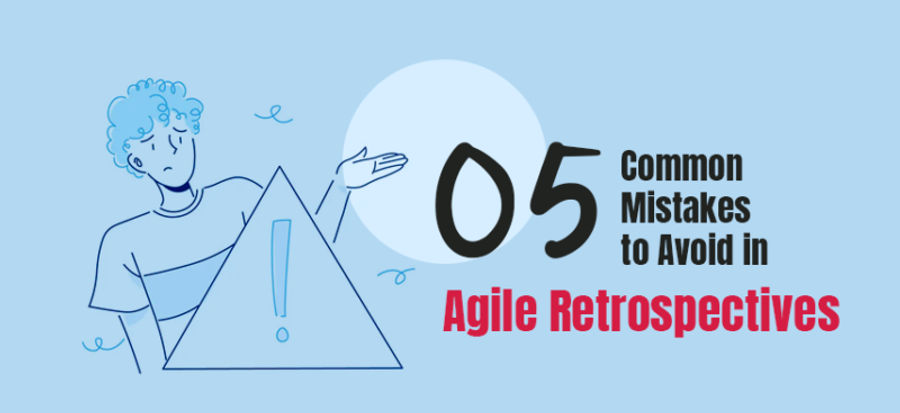
- Agilemania
- Dec 16th 2020
The scrum framework incorporates multiple management characteristics that determine its high project benefits. Retrospectives being one such example. Traditionally, a retrospective is a meeting organized right after a sprint to grasp the positive and negative happenings during the process. It allows the team members to project their feedback on the previous sprint.
Retrospectives need to get undertaken in the right manner to procure the maximum possible benefits. A few common mistakes are often seen to be practiced by scrum teams that offer hindrance. From amateur to advanced scrum teams, all are likely to be making these mistakes unknowingly.
Following is a list of five mistakes scrum teams are making during an Agile Retrospective:
1. Not Doing Retrospectives More Often: Due to constant deadlines, the work pressure might suggest the scrum teams miss on the retrospectives after every sprint. A retrospective ceremony ensures a positive outcome by eliminating any dysfunctional cycle in an agile project. Thus, making the work pressure worth the time invented and effort spent. It is of optimum importance to stay consistent in determining the crests and troughs of a project.
If the agile team fails to accomplish the regular retrospectives, it will affect the project's wider picture. The foremost objective of retrospectives is to help the team understand its past achievements and failures. This will certainly facilitate the functioning of the team. Being infrequent can be an obstacle in the procurement of maximum benefits from the meeting.
The ultimate step to not being infrequent is to settle with a frequency to transpire retrospectives beforehand. It could be defined weekly or sprint wise depending on the project requirements. This will also majorly depend on the preferences of the team.
2. Involving Only The Core Members Of The Team: Little drops of water make a mighty ocean. Every team member needs to be heard with open ears while discussing the problems throughout the retrospective meeting. It is utterly wrong to invite only the members on reputed posts or just project managers to mark their words. This will result in a lack of communication within the team, and the maximum output will not be obtained. Agile retrospectives should involve the entire team. Every problem during the process will be looked upon with different perspectives by every individual. One team member may address the issue, and another may provide the necessary solution. This will also help people in understanding their roles. This way, when a similar problem arises next time, the concerned person will know who to lead to. Heading to the moral aspect, the overall credit of the project's success should be distributed evenly among everyone. Adequate appreciation will ignite a sense of loyalty within the team.
3. Only Talking About The Negatives: A retrospective should not just be meant to discuss the pitfalls of the earlier happened sprint. It is equally as important to address the expectations that were successfully met by the team. In fact, the team should discuss the positive picture first to break the ice. This will encourage them to contribute throughout the retrospective meeting with great enthusiasm actively. It will generate a feeling of appreciation and support. This will have a considerable impact in improving the productivity of the team as well. A positive start will also motivate the team to look forward to future meetings. If done otherwise, the team might tend to escape from the idea of participating in retrospectives.
4. Not Following Up With Previous Retrospectives: Regular follow-ups should also be a matter of consideration, along with regular retrospectives. The main intention of conducting a retrospective meeting should remain intact while the project is being carried out. If the team fails in following up with the previous discussion, it will lead to the efforts going in vain. Subsequently, the ideal benefits will not be procured. To prevent this situation, it is of utmost importance to transcribe the conversation that happens during the meeting. From the problems that were encountered to the aspects that went well, all need to be noted. Big projects are likely to incorporate multiple agile retrospectives. A summary of all these should be maintained till the project goal is reached. This will also help track the team's improvement, who contributed well, and who did not.
5. Trying To Do All At Once: This is a light one but is often left ignored by scrum teams. The determination of a team to fulfil the project requirements at the earliest is understandable and highly appreciated. However, overloading oneself with work can act as a potential threat to the team's productivity. Retrospectives are already entitled as crucial events of every project. Taking them as a burden should be obstructed. It can be tiresome and even tedious for the team to discuss all problems at once. This might also make them resistant to conducting further retrospectives in the near future. Multiple retrospective meetings should get organized to avoid this situation. It's better to keep the meeting short on the duration rather than on the productivity end.








